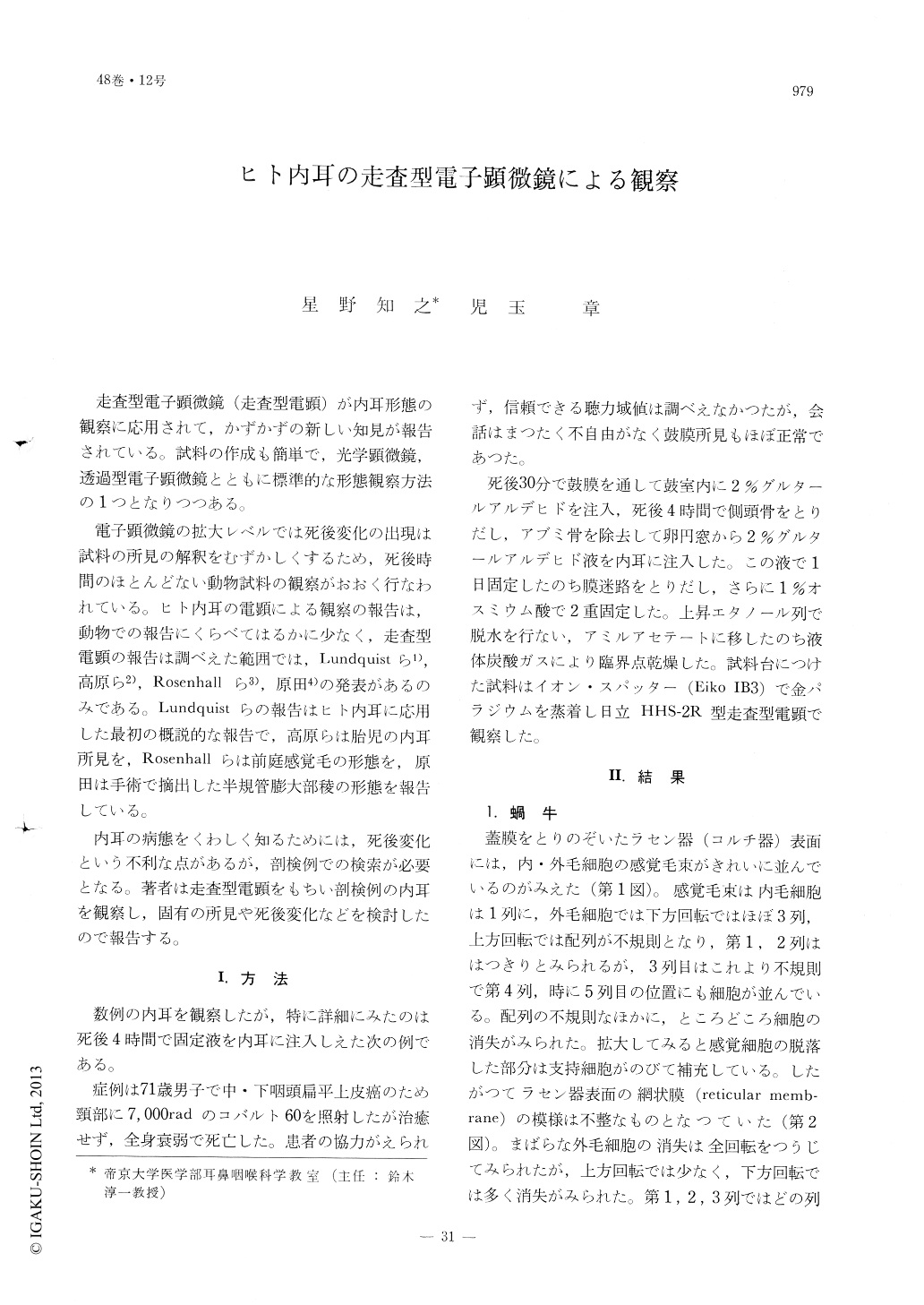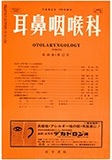Japanese
English
- 有料閲覧
- Abstract 文献概要
- 1ページ目 Look Inside
走査型電子顕微鏡(走査型電顕)が内耳形態の観察に応用されて,かずかずの新しい知見が報告されている。試料の作成も簡単で,光学顕微鏡,透過型電子顕微鏡とともに標準的な形態観察方法の1つとなりつつある。
電子顕微鏡の拡大レベルでは死後変化の出現は試料の所見の解釈をむずかしくするため,死後時間のほとんどない動物試料の観察がおおく行なわれている。ヒト内耳の電顕による観察の報告は,動物での報告にくらべてはるかに少なく,走査型電顕の報告は調べえた範囲では,Lundquistら1),高原ら2),Rosenhallら3),原田4)の発表があるのみである。Lundquistらの報告はヒト内耳に応用した最初の概説的な報告で,高原らは胎児の内耳所見を,Rosenhallらは前庭感覚毛の形態を,原田は手術で摘出した半規管膨大部稜の形態を報告している。
Inner ear specimens from a 71 year-old man are studied under a scanning electron microscope. The specimens, fixed 4 hours after death, showed a well preserved cochlea with peeling off of the cell surface of the organ of Corti from postmortem changes. The postmortem changes in the vestibule were by far too advanced to study the details of the sensory epithelium.
The loss of outer hair cells were seen in all turns of the cochlea which appeared to be more pronounced towards its lower turns. The loss of inner hair cells were found only at the basal end of the cochlea. These changes were considered to he those of degeneration due to the age of the patient.
A very little postmortem degeneration was seen in the cochlea sensory hairs and the tectorial membrane. And, imprints of the insertion of the hair tips of the outer hair cells were clearly seen on the undersurf ace of the tectorial membrane. The firm attachments of the tips of the longest hairs of the outer sensory hair bundle to the tectorial membrane were assumed because there were visible a number of lines instead of one. For the inner sensory hair cells no such imprint was found.

Copyright © 1976, Igaku-Shoin Ltd. All rights reserved.


